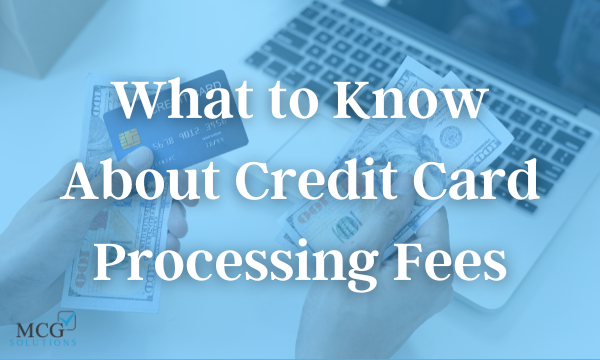In today’s world, most customers and clients expect to pay with credit cards. When you accept credit cards, however, there are certain processing fees to account for. Depending on your processor, these fees typically range from 1.5 to 3.5 percent of each purchase. This can be a surprisingly big expense for small businesses.
Here’s how credit card processing fees work, so you can select the right processor for your needs.
What are processing fees?
Processing fees are paid to credit card companies and financial service providers to verify a credit card transaction and complete the purchase. These fees are typically split between the financial institutions handling the fees.
Processing fees include the payment processor fee, which goes to the processing company who manages card payment logistics. Square, for instance, is a very popular credit card processor for small businesses. There is also an assessment fee, which goes to the card networks like Visa and American Express. Finally, there is an interchange fee, which goes to the bank that manages the credit card the customer used, such as Chase or Bank of America.
How are fees calculated?
Different processors use different pricing structures. There are four broad types:
- Flat-rate: With a flat-rate structure, you’ll pay a flat fee (such as 10 cents) per transaction, plus a percentage of the transaction total. For example, a three percent fee on a $30 purchase would be 90 cents, so a processor charging a 10 cent flat fee would receive $1 out of that transaction.
- Tiered pricing: Tiered pricing also uses a percentage plus a flat fee, but the fees vary based on what kind of cards you accept. The tiers are sorted by whether the card has a rewards program, and how generous it is. Rates are higher for cards with generous rewards programs, and lower for cards without them.
- Interchange-plus pricing: Interchange-plus pricing is based on the interchange rate charged by the credit card network, plus a transaction fee. The rates will vary depending on the card network (Visa, American Express, Discover and more), whether the card includes rewards and whether the card was processed in person, online or over the phone.
- Membership pricing: Some payment processors offer pricing for members, which eschews sales percentages in favor of charging monthly or annual membership fees. They may also charge a flat per-transaction fee, which is usually several cents.
Your sales volume and how you process credit cards (online, in person or over the phone) will determine which type of pricing structure is best for you.
Who pays the processing fees?
Merchants are usually the party who pays the processing fees. Most businesses factor credit card processing fees into how they price their items or services, but some small businesses simply charge an extra flat rate to process cards instead of cash.
Planning for credit card processing fees can help you estimate how much you’ll spend monthly or annually—and it might determine whether you choose to accept cards at all.
For professional bookkeeping and tax preparation assistance, contact MCG Solutions today.

